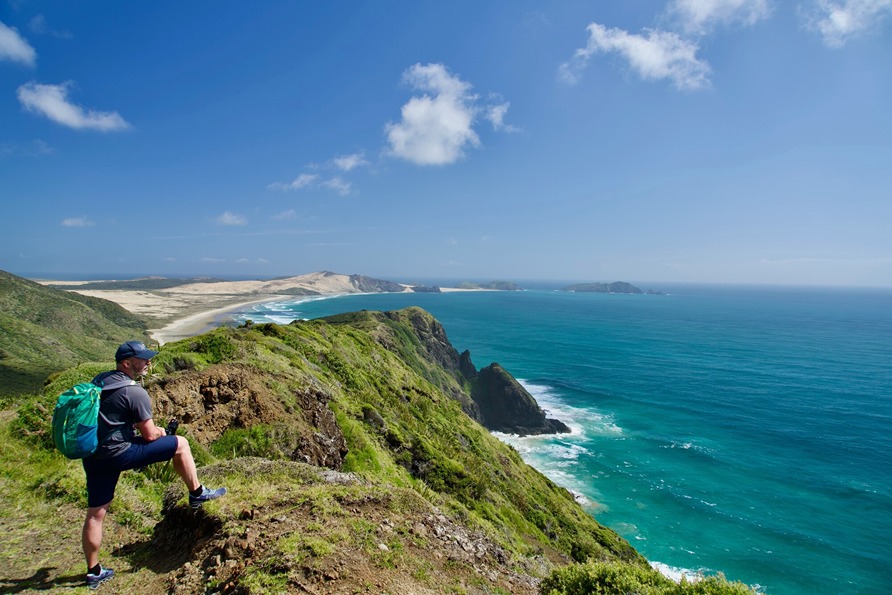
With dramatic snow-capped mountains, incredibly diverse landscapes and easy access to remote lakes and rivers, it’s no wonder hiking New Zealand’s outdoors is hugely popular.
However, venturing into the backcountry involves some risks and it’s crucial to know what they are and how to minimise them — for the safety of you and your travelling companions.
In this blog, we chat about why hiking safety is important in New Zealand and offer ten tips for staying safe on a backcountry hike.
|
Contents Contents Why is hiking safety important in New Zealand Safe hiking tips |
Why is hiking safety important in New Zealand?
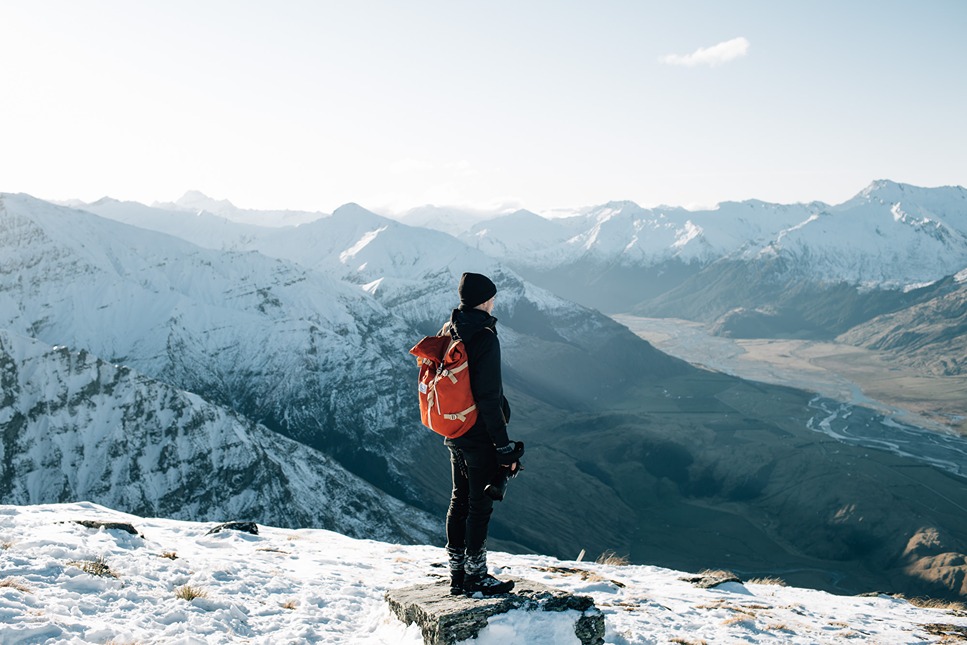
If you’re not used to hiking in the New Zealand outdoors, the country’s unique conditions can be more risky. Issues often arise when travellers base their assumptions on experiences in their home country’s outdoor environment — resulting in a lack of preparation and an underestimation of local conditions, such as:
- Fast changing weather — like a warm sunny day switching to rain and a cold southerly wind within minutes
- Crossing rivers — many riverbeds and side streams aren’t bridged so crossing through raised rivers after some rain can be dangerous if you’re inexperienced
- Rugged remote terrain — the mountain environment is challenging, and underestimating a track’s difficulty can lead to getting lost or risking a fall.
You may find that tracks classified as easy in New Zealand are more challenging than similar classifications in other countries. You’ll often need to move at a consistently brisk pace to match the suggested walk times.
|
Hiking versus tramping In New Zealand, locals commonly use the term tramping instead of hiking when talking about walking in the mountains. Tramping is a term that denotes a decent outdoor hike — often bringing to mind images of extended, multi-day hikes carrying a backpack. However, tramping can also apply to sizable day walks. |
1. Plan your hike well
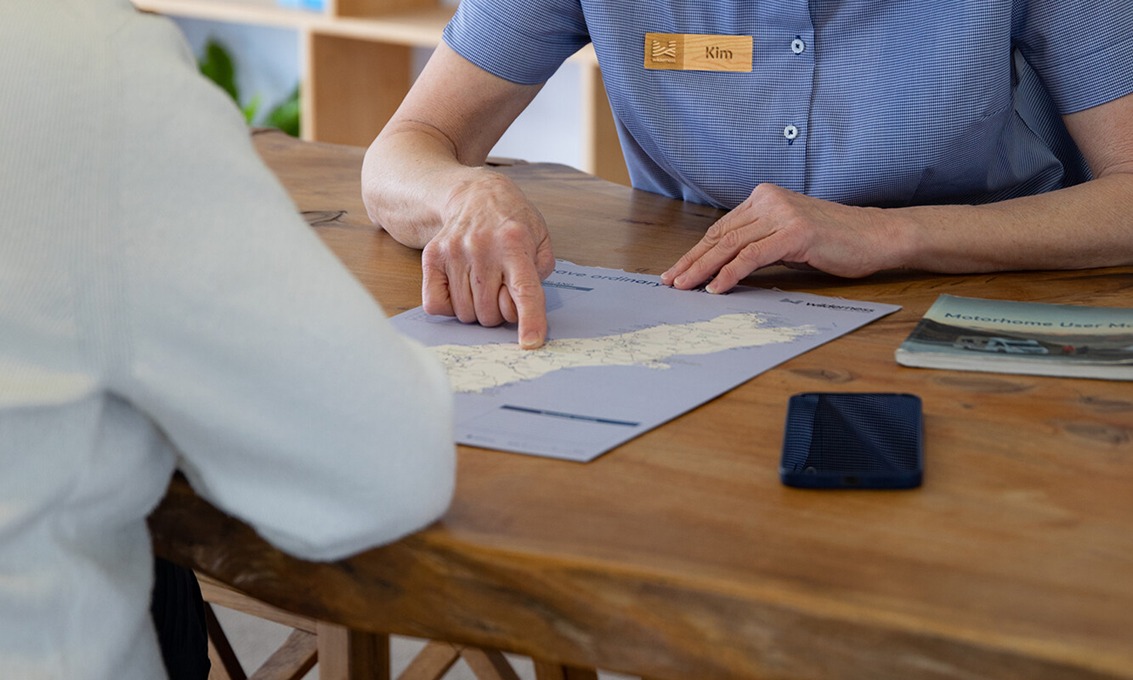
Regardless of whether you’re interested in completing a short walk or taking on a longer day hike, planning is the most important thing you can do to prepare. Be sure to:
- Regularly check the weather forecast — in the days leading up to your hike and on the day as New Zealand’s weather is notoriously changeable
- Call or visit the Department of Conservation (DOC) — and get their insight into specific trails you’re interested in hiking
- View a map — the trailhead map may be enough for a short walk but download or screenshot a DOC topographic map for anything longer
- Plan your route — especially if there are multiple trails so you’re clear on the path you intend to take
- Share your plans — with others in your party who aren’t hiking, friends or family back home via messaging, or even a DOC ranger at a visitor centre
If the weather forecast starts deteriorating and there’s a chance of severe weather, it may be best to postpone your hike for another day. If you don’t have protective wind and rainwear, hypothermia is a real possibility when the weather changes and comes in fast from the south in the New Zealand mountains.
2. Take a communication device
Losing the trail can happen — as can accidents. Being able to communicate with someone while hiking the New Zealand backcountry is important, and can be lifesaving.
You’ll likely have a mobile phone on your motorhome hire adventure so remember to charge it the night before and take it with you. However, mobile coverage in New Zealand can be unreliable — particularly in remote areas like the mountains.
Depending on the length and difficulty of the trails you plan to hike, consider carrying a secondary means of communication. Options include a personal locator beacon (PLB) or a satellite phone. You can hire a PLB from a bunch of outlets around the country — just remember to keep it dry on your hike.
Discover if onboard WiFi or mobile data is the best option for your motorhome trip.
3. Wear hiking footwear
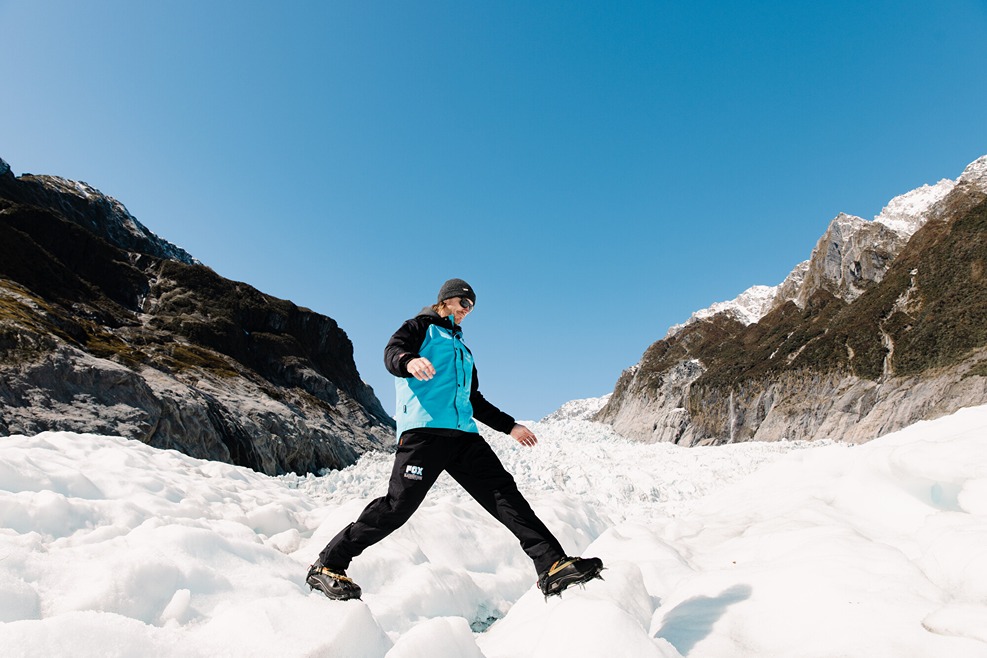
Although you may see a few young New Zealanders wearing jandals on short trails around the country, they’re far from the best footwear for hiking.
Pack your best hiking boots (or hiking shoes) and keep your feet better protected from the weather, hazards on the track and varying trail conditions. Boots with reinforced toe caps can withstand impact and compression, giving you that extra layer of protection.
It’s also essential to have footwear that’s the correct size and comfortably fits your feet. And if your boots are waterproof, you’ll be well prepared for crossing rivers, streams and creeks — many of which are unbridged.
See what else you should pack for your campervan hire road trip.
4. Pack light rainwear
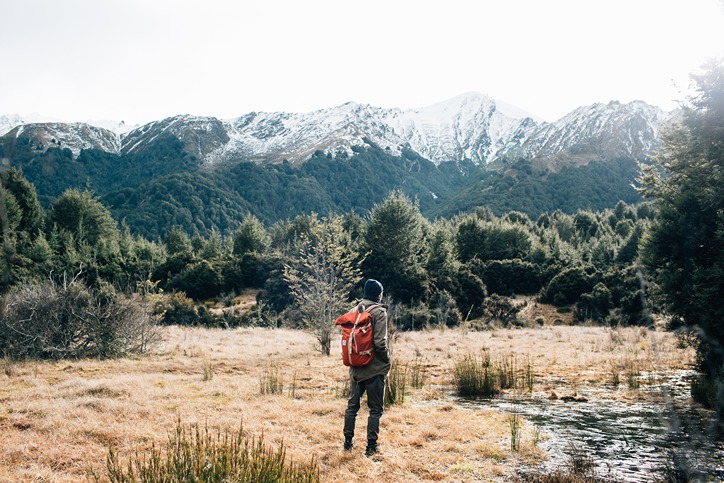
Always assume that you’ll meet some rain while on a New Zealand hiking trail. It won’t always happen, of course, but the key is being prepared for it. It may be a glorious day with the sun shining brightly — but mountain weather is highly changeable.
Carry light waterproof rainwear in your pack — both pants and a hooded jacket. Also wear or pack layers that can be easily removed or added as the weather and temperature changes. Try to avoid cotton clothing which doesn’t breathe well and retains moisture. Instead, choose moisture wicking clothes designed to keep you warm and dry — or cool if it heats up.
Find out about New Zealand weather across the seasons.
5. Bring food and drink
Dehydration and malnutrition can lead to symptoms like dizziness and fatigue — so staying hydrated and nourished while hiking is crucial.
Bring plenty of water and snacks to keep your energy levels high. How much food and drink you bring is up to you but consider taking double what you think you might need. It’s better to return to your motorhome rental with leftovers than run out if your hike takes longer than expected.
Take a look at our top tips for cooking on a road trip.
6. Carry emergency items
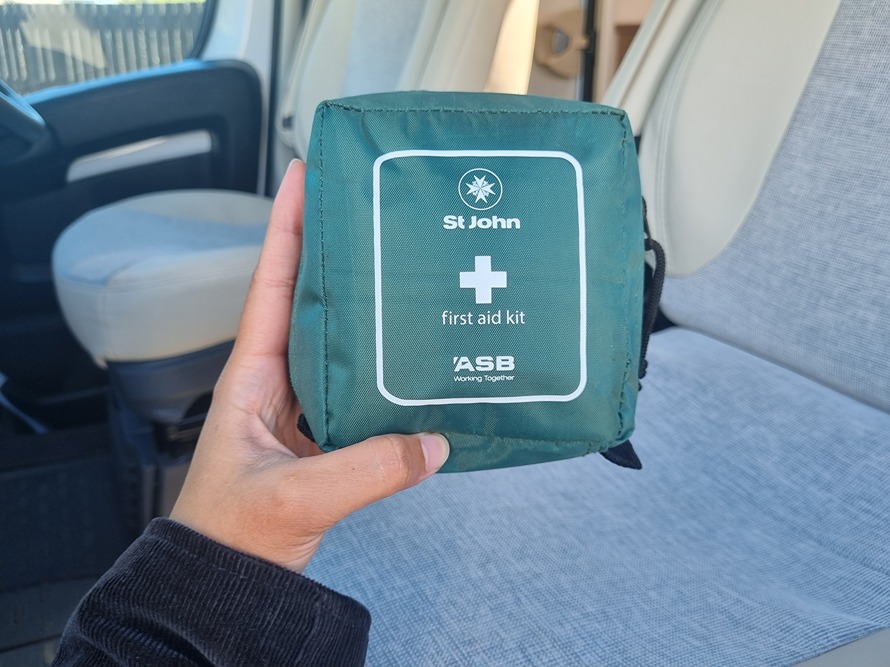
You don’t need to reserve much room in your hiking day pack for useful items should something go wrong. Ensure you pack a:
- First aid kit — which includes gauze roll, tough bandages, blister patches, antiseptic, ibuprofen, antihistamines, sunscreen, water purification tablets and any personal medications
- Compass with your topographic map — to help find your way to safety if you lose the trail
- Head torch, pocket knife and waterproof matches — in case you have to stay put overnight.
Knowing the signs of hypothermia and heat exhaustion, and how to respond to them, is also valuable knowledge when in the New Zealand wilderness.
|
Giving first aid with confidence It's a smart idea to take a first aid course if you plan to do a lot of hiking on holiday. It’s all very well to carry a first aid kit but knowing how to use the items properly is most important. |
7. Stay water safe
.jpg?width=765&height=511&name=Stay%20Water%20Safe%20-%20TNZ%20(Miles%20Holden).jpg)
New Zealand rivers and streams are sometimes deceptively dangerous. They’re one of the main backcountry hazards where people get into trouble.
It’s important to:
- Not cross unbridged rivers during or after heavy rain
- Carefully evaluate each river — and if in doubt about its high level or swift movement, avoid crossing
- Use the mutual support method — to cross a river if you’re a group of two or more people.
Lakes and the sea also have hazardous elements to be aware of. Mountain lakes are often extremely cold and can have strong underflow currents at steep drop offs near river mouths. The sea needs to be respected as hidden rips can quickly pull you out into deep water.
Check out our blog on staying safe in New Zealand’s summer.
8. Know your limits
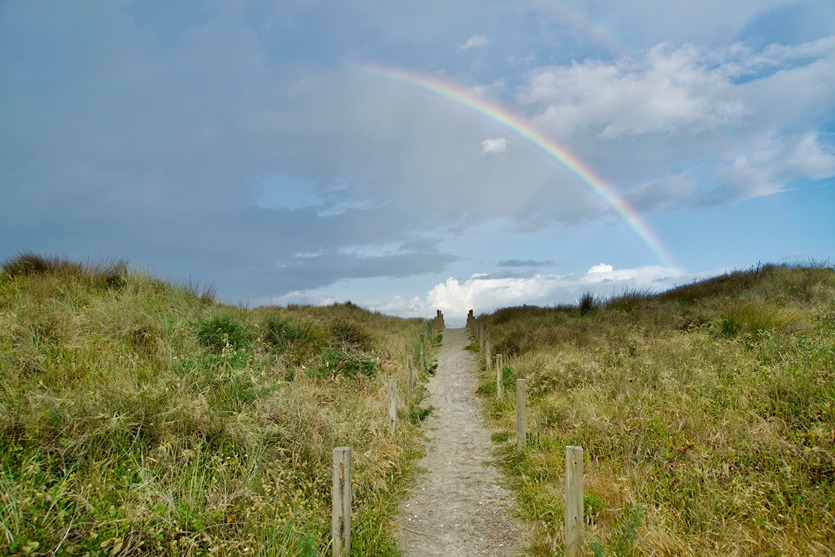
Your New Zealand campervan rental holiday will be an unforgettable adventure but knowing your limits is a fundamental part of staying safe in the backcountry.
Hiking in remote areas requires an honest assessment of your experience and physical fitness. Rugged terrain and changeable weather can rapidly turn a leisurely stroll into a challenging trek. Before setting out, evaluate the trail’s difficulty — compared to your abilities and prepare accordingly.
Don't push yourself too hard and take breaks when needed. Overexertion can lead to injuries and accidents — so listen to your body and pace yourself.
9. Respect the environment
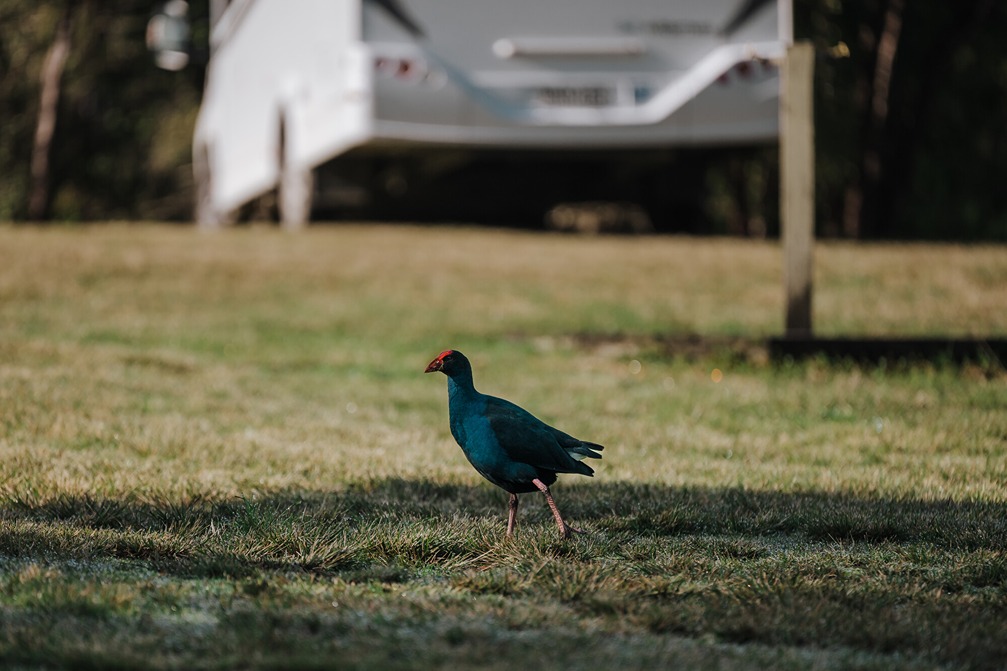
Being aware of your surroundings while hiking in New Zealand will help you go a long way towards respecting the environment. Remember to:
- Keep to the designated trails — besides the risk of getting lost, sticking to the track prevents the fragile ecosystem around you from being walked on
- Pack out what you pack in — leaving no trace by taking all food rubbish with you
- Maintain distance from wildlife — you’ll likely encounter native birds like weka or kea at some point on the trail so give them some space and avoid feeding them
- Be mindful of any fire restrictions in the area where you’re hiking.
Learn more about our promise to the environment and the Tiaki Promise.
10. Be mindful of local culture
.jpg?width=812&height=457&name=Mount%20Hikurangi%20-%20TNZ%20(Eric%20Hanson).jpg)
Places of cultural significance and historical heritage around the country are often related to Māori culture. It’s important to always show respect by following local restrictions and guidelines. If you’re unsure, query a member of DOC in the area where you plan to hike.
Get more information about hiking etiquette in New Zealand.
|
Tongariro Alpine Crossing One of the world’s greatest day hikes is also a dual World Heritage site — for cultural and natural values. The park is very significant to Māori people as it embodies ancestral lands and is home to sacred mountains like Mount Ngauruhoe. The mountains are sacred (tapu) and as a visitor you’ll be expected to respect the site by sticking to the trail and not removing any flora or geology. |
By being prepared for all situations and prioritising safety before hiking in New Zealand, you’ll take incredible memories of breathtaking landscapes home with you.
Discover some of the best hikes and walks in New Zealand.



